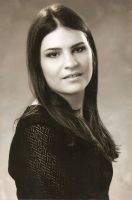William Makepeace Thackeray, George Eliot (Mary Ann Evans) and Robert Louis Stevenson
After one year at Cambridge University, Thackeray went abroad to study languages and art. On his return he took up law, but finally chose a literary career. He wrote for magazines and also gave lectures. While Dickens tried to expose the sufferings of the poorer classes, Thackeray exposed the hypocrisy and insincerity of the richer people. This he did most effectively in Vanity Fair (1848). Henry Esmond (1852) is a novel with a historical setting. The Rose and the Ring is a burlesque of the romantic novel.
Many women began to write novels at this period, and some of them assumed masculine names. Mary Ann Evans had a good education and kept house for her father, who was a strict Protestant. She rebelled against his narrow views and became a rationalist. In 1850 she took up journalism in London and translated philosophical works from the German. She offended public opinion by living with a man who was already married, but he inspired her in her work. Scenes of Clerical Life came out in 1857, Adam Bede in 1859 and The Mill on the Floss in 1860. All George Elliot`s novels show characters striving for truth and their ideals and against hypocrisy and compromise.
Stevenson was born and educated in Edinburgh, where he studied at the University with the intention of becoming an engineer, like his father and grandfather. But as his health was not so good he turned to law instead. What he loved, however, was literature, and he carefully cultivated a literary style by imitating great writers. His first book was An inland Voyage (1878). Travel in some form is the subject of many of his essays, stories and novels, and he himself, as a sufferer from tuberculosis, was constantly seeking health in different parts of the world. Treasure Island (1883) was a story of adventure for boys. It was followed by A Child`s Garden of Verses and by Dr. Jekyll and Mr. Hyde, a study in the macabre. After living England for the south Pacific, Stevenson wrote a number of novels from Scottish life, including The Master of Ballantrae (1889) and Weir of Hermiston, which was unfinished at the time of his death.
